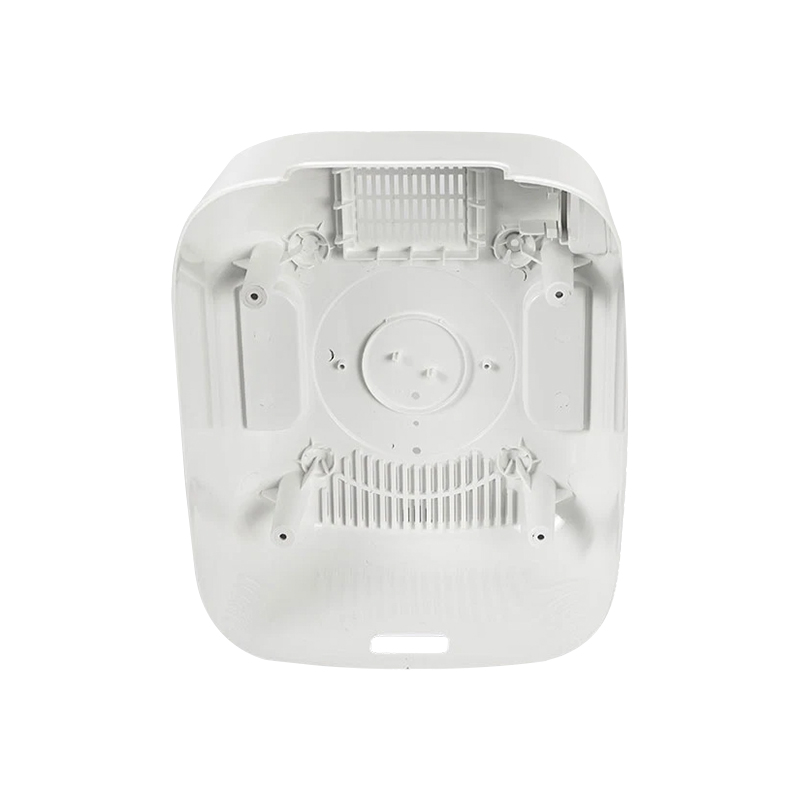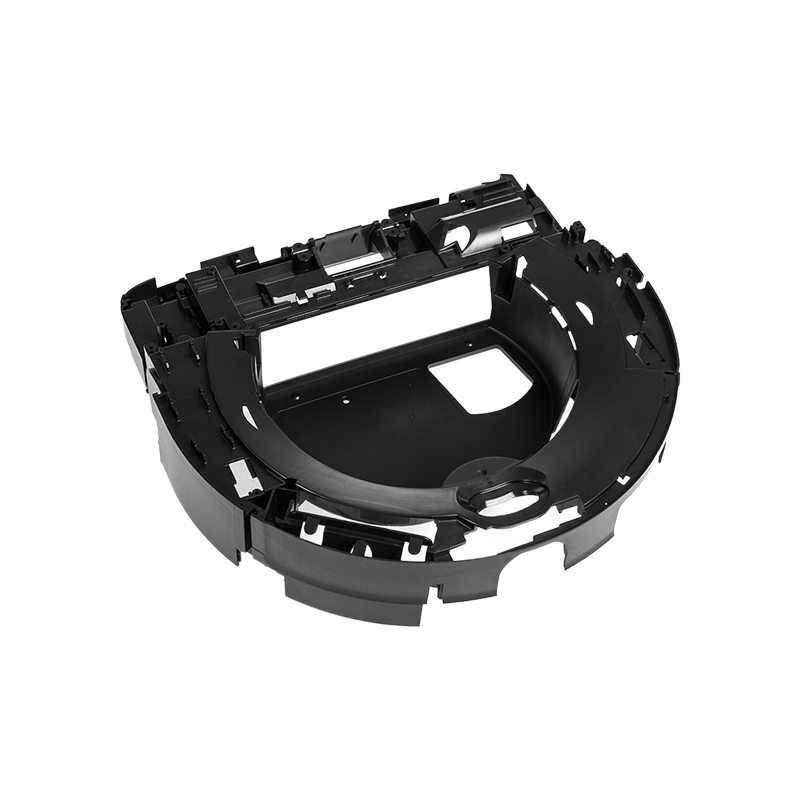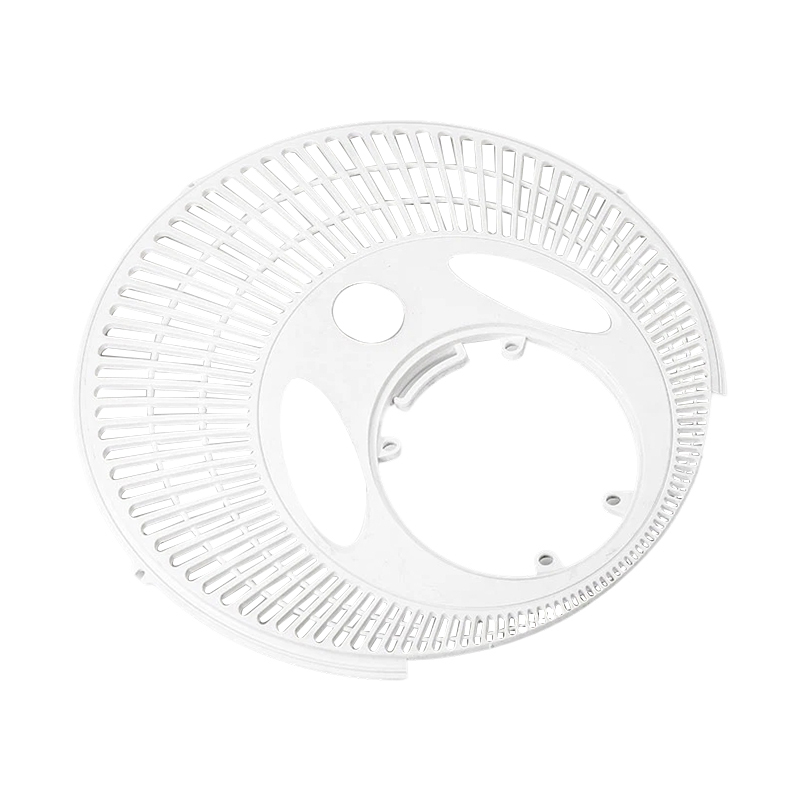How to improve low-frequency response by optimizing the speaker housing structure?
Release Time : 2025-04-17
In the design of audio equipment, the performance of the speaker not only depends on the quality of the internal components, but also on the shell structure. Especially for low-frequency response, the shell design directly affects the performance of the sound quality. By scientifically and rationally optimizing the speaker housing structure, the low-frequency effect can be significantly improved, bringing a richer and fuller sound experience.
First, understanding the characteristics of low-frequency sound is the key. Low-frequency wavelengths are long, and standing waves and reflections are prone to occur, which poses a challenge to the design of the speaker cabinet. An effective strategy is to adopt a closed cabinet design. Compared with open or inverted cabinets, closed cabinets can provide cleaner and more compact low-frequency performance. This is because the air in the closed cabinet helps control the movement of the diaphragm and reduce unnecessary vibrations, thereby improving the clarity and accuracy of the low-frequency response. In addition, the closed cabinet can effectively avoid external noise interference, further enhancing the purity of the sound quality.
Secondly, the choice of cabinet material has a direct impact on the low-frequency response. Different materials have different densities and rigidities, which will affect the propagation speed and resonance characteristics of the sound. For example, high-density fiberboard (HDF) or medium-density fiberboard (MDF) are often used to make high-quality speaker cabinets due to their good damping properties and relatively high density. These materials can effectively suppress unnecessary resonances and prevent sound distortion. At the same time, the use of multi-layer composite materials can further optimize the acoustic performance of the cabinet. Through the interaction between different material layers, harmful vibrations are absorbed and dispersed, ensuring a smoother and more natural low-frequency output.
In addition, considering the spatial layout inside the speaker cabinet is also an important part of optimizing the low-frequency response. Reasonable internal space allocation can help reduce the formation of standing waves and optimize the low-frequency response curve. A common practice is to add sound-absorbing materials such as wool felt or foam plastics to the cabinet, which can absorb excess energy, reduce reflections in the cabinet, and make the low frequency more concentrated and powerful. At the same time, appropriately increasing the cabinet volume can also help extend the low-frequency lower limit frequency and make the bass deeper and thicker. However, too large a cabinet volume may lead to a decrease in efficiency, so it is necessary to find the best balance point according to actual needs.
In addition, the design of the bass reflex port cannot be ignored for improving the low-frequency response. The bass reflex port enhances low-frequency output by directing air flow through the cabinet, but its size, length and position need to be carefully calculated and adjusted. If the design is not done properly, new problems may be introduced, such as airflow noise or phase distortion. The ideal bass reflex port design should match the cabinet volume and driver parameters to achieve the best low-frequency extension and gain effect. Modern computer-aided design (CAD) software can help engineers simulate different design options to quickly find the optimal solution.
Finally, it is worth noting that the edge treatment of the speaker housing can also affect the low-frequency response. Sharp corners can easily cause high-frequency diffraction, which in turn interferes with the overall sound quality. Rounded and smooth edges help to reduce this undesirable effect and make the low frequency more coherent and smooth. Therefore, in the design process, try to use a soft transition edge treatment to optimize the sound wave propagation path.
In summary, by optimizing the speaker housing structure - including choosing the right cabinet type, material, internal layout and accurately designing the bass reflex port, you can effectively improve the low-frequency response and bring a better listening experience. Whether it is professional audio equipment or home entertainment systems, these optimization strategies can significantly improve the sound quality and meet users' demand for high-quality sound. With the advancement of technology, we are expected to see more innovative designs in the future, further promoting the development of audio products.
First, understanding the characteristics of low-frequency sound is the key. Low-frequency wavelengths are long, and standing waves and reflections are prone to occur, which poses a challenge to the design of the speaker cabinet. An effective strategy is to adopt a closed cabinet design. Compared with open or inverted cabinets, closed cabinets can provide cleaner and more compact low-frequency performance. This is because the air in the closed cabinet helps control the movement of the diaphragm and reduce unnecessary vibrations, thereby improving the clarity and accuracy of the low-frequency response. In addition, the closed cabinet can effectively avoid external noise interference, further enhancing the purity of the sound quality.
Secondly, the choice of cabinet material has a direct impact on the low-frequency response. Different materials have different densities and rigidities, which will affect the propagation speed and resonance characteristics of the sound. For example, high-density fiberboard (HDF) or medium-density fiberboard (MDF) are often used to make high-quality speaker cabinets due to their good damping properties and relatively high density. These materials can effectively suppress unnecessary resonances and prevent sound distortion. At the same time, the use of multi-layer composite materials can further optimize the acoustic performance of the cabinet. Through the interaction between different material layers, harmful vibrations are absorbed and dispersed, ensuring a smoother and more natural low-frequency output.
In addition, considering the spatial layout inside the speaker cabinet is also an important part of optimizing the low-frequency response. Reasonable internal space allocation can help reduce the formation of standing waves and optimize the low-frequency response curve. A common practice is to add sound-absorbing materials such as wool felt or foam plastics to the cabinet, which can absorb excess energy, reduce reflections in the cabinet, and make the low frequency more concentrated and powerful. At the same time, appropriately increasing the cabinet volume can also help extend the low-frequency lower limit frequency and make the bass deeper and thicker. However, too large a cabinet volume may lead to a decrease in efficiency, so it is necessary to find the best balance point according to actual needs.
In addition, the design of the bass reflex port cannot be ignored for improving the low-frequency response. The bass reflex port enhances low-frequency output by directing air flow through the cabinet, but its size, length and position need to be carefully calculated and adjusted. If the design is not done properly, new problems may be introduced, such as airflow noise or phase distortion. The ideal bass reflex port design should match the cabinet volume and driver parameters to achieve the best low-frequency extension and gain effect. Modern computer-aided design (CAD) software can help engineers simulate different design options to quickly find the optimal solution.
Finally, it is worth noting that the edge treatment of the speaker housing can also affect the low-frequency response. Sharp corners can easily cause high-frequency diffraction, which in turn interferes with the overall sound quality. Rounded and smooth edges help to reduce this undesirable effect and make the low frequency more coherent and smooth. Therefore, in the design process, try to use a soft transition edge treatment to optimize the sound wave propagation path.
In summary, by optimizing the speaker housing structure - including choosing the right cabinet type, material, internal layout and accurately designing the bass reflex port, you can effectively improve the low-frequency response and bring a better listening experience. Whether it is professional audio equipment or home entertainment systems, these optimization strategies can significantly improve the sound quality and meet users' demand for high-quality sound. With the advancement of technology, we are expected to see more innovative designs in the future, further promoting the development of audio products.








